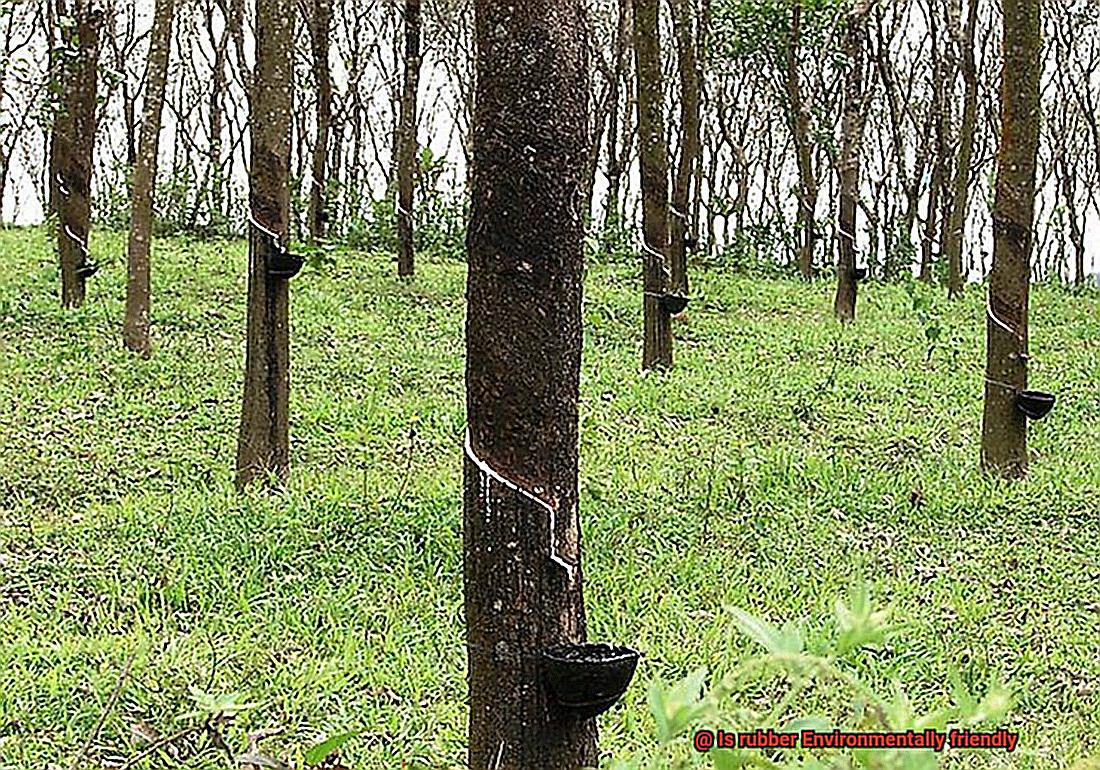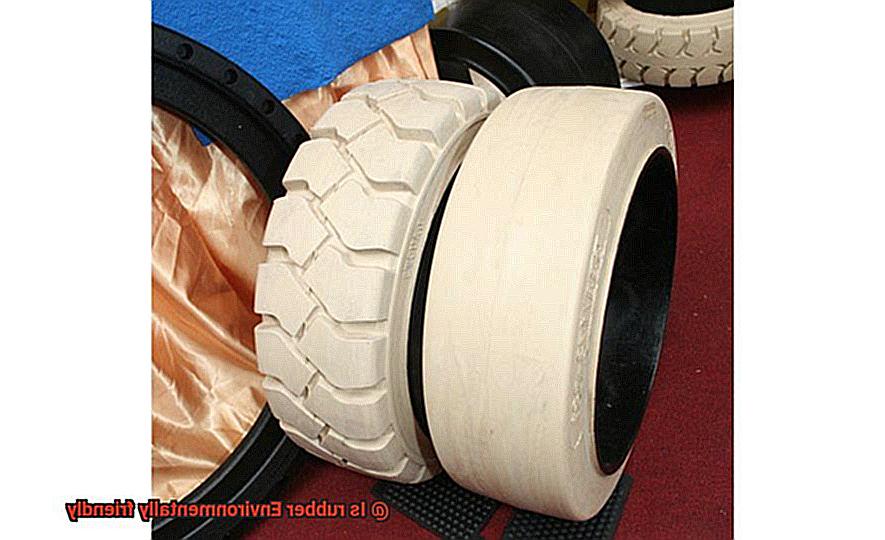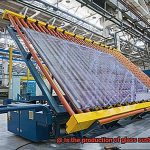Rubber – a ubiquitous material that we encounter daily in products ranging from car tires to gloves and medical equipment. It’s versatility and durability make it an essential component in modern manufacturing. But, as our planet grapples with environmental challenges, it’s crucial to ask the question: is rubber environmentally friendly?
At first glance, one might assume that rubber, sourced from natural materials, would be eco-friendly. However, the reality is more complicated than that. While rubber has several environmental benefits, there are also downsides that cannot be ignored.
In this blog post, we’ll explore whether rubber production and use can be considered sustainable. We’ll take a deep dive into the environmental impact of rubber production – including the use of synthetic rubber – and examine how we dispose of rubber products. Along the way, you’ll discover some surprising facts about the industry that may change your perspective on this common material.

So buckle up for a journey into the world behind our tires and footwear as we uncover whether or not rubber is truly environmentally friendly.
Overview of the Lifecycle of Rubber Products
Contents
Rubber is a material that has become an essential part of our daily lives. We use it in everything from cars to shoes, but its widespread use also raises concerns about its environmental impact. To truly understand the sustainability of rubber, we need to examine the complete lifecycle of rubber products, from extraction to disposal.
The lifecycle of rubber products can be divided into four main stages: extraction, production, use, and disposal. Each stage has different environmental impacts that must be considered when evaluating the sustainable properties of rubber.
The extraction of rubber involves harvesting latex from rubber trees. While this process can be done sustainably, improper management can lead to deforestation and loss of biodiversity. The use of pesticides during cultivation can also harm soil and water quality. It is important to ensure that sustainable practices are implemented during this process to minimize environmental impacts.
During the production stage, raw rubber is transformed into finished goods using chemicals and energy. This process can have significant environmental impacts such as greenhouse gas emissions and pollution from chemical processes. However, there are efforts underway to make rubber production more sustainable by reducing harmful chemical use and incorporating renewable energy sources.
The use phase of rubber products also has environmental impacts that vary depending on the product. For example, tire wear releases tiny particles into the air contributing to air pollution, while rubber flooring or playground surfaces have fewer environmental impacts during use. However, it is important to consider the entire lifecycle of a product when evaluating its impact on the environment.
Lastly, when rubber products reach the end of their useful life, they can either be recycled or disposed of in landfills. Recycling rubber can be challenging because it requires specialized equipment and processes. If rubber ends up in landfills, it can take hundreds of years to decompose due to its durability. Proper disposal methods must be implemented to avoid harm to the environment.
Environmental Impacts of Rubber Production
Rubber production has become an integral part of our daily lives. From car tires to household gloves, we use rubber for various purposes. However, the process of producing rubber has significant environmental impacts that cannot be ignored. As an expert on this topic, I would like to share with you the pressing concerns regarding the environmental impacts of rubber production.
One of the most significant concerns is deforestation. Rubber plantations often replace tropical rainforests, leading to habitat destruction and biodiversity loss. Endangered species such as orangutans and tigers are losing their homes due to the clearance of forests. Moreover, the clearing of forests releases carbon into the atmosphere, contributing to climate change.
Another issue is the use of chemicals in rubber production, such as pesticides, fertilizers, and herbicides. These chemicals can contaminate soil and water sources, endangering both wildlife and human health. They also contribute to the degradation of soil quality, making it more challenging for plants to grow in the future.
Furthermore, rubber production requires a vast amount of water, which can cause water scarcity in areas where it is already limited. The process also generates wastewater that can pollute nearby rivers and streams.
To address these environmental concerns, it is essential to develop more sustainable rubber production methods. For instance, agroforestry systems that incorporate rubber trees into existing ecosystems rather than replacing them entirely could be used. Additionally, using recycled rubber products can help reduce the demand for new rubber production.
Environmental Impacts of Rubber Use
Rubber products are used in countless applications, from car tires to household gloves, and are essential to our daily lives. However, the production and disposal of rubber products have significant consequences for our environment.
One of the most significant environmental concerns related to rubber production is deforestation. The cultivation of natural rubber trees requires large areas of land, which can lead to habitat loss and biodiversity reduction. The resulting loss of forests can disrupt entire ecosystems, affecting the lives of both animals and humans.
Moreover, the process of harvesting latex from rubber trees involves the use of harmful chemicals like pesticides and fertilizers, which can pollute soil and water systems. These chemicals can contaminate nearby water sources, causing harm to aquatic life and potentially even affecting human health.
In addition to deforestation and chemical pollution, the manufacturing process of rubber products also contributes to environmental degradation. Synthetic rubber production relies heavily on non-renewable fossil fuels and emits greenhouse gases that contribute to climate change. Furthermore, the disposal of rubber waste poses a significant challenge to the environment since it can take hundreds of years for rubber products to decompose in landfills.
Despite these challenges, there is hope for a more sustainable future. Companies are exploring innovative ways to recycle rubber waste by using it as raw material for new products or incorporating it into road surfaces. By reusing old rubber products, we can reduce the amount of waste that ends up in landfills and prevent further harm to our environment.
Moreover, there is a growing demand for sustainable and eco-friendly rubber products, which has led manufacturers to explore alternative sources of natural rubber and reduce their carbon footprint. For example, some companies are developing ways to extract natural rubber from dandelions instead of traditional rubber trees. This approach reduces deforestation while also providing an alternative source for this vital material.
Sustainable Rubber Products
Rubber is an incredibly versatile material that we use in countless ways every day, from the soles of our shoes to the tires on our cars. However, the production and disposal of rubber have significant environmental consequences, including deforestation, chemical pollution, and greenhouse gas emissions. Luckily, sustainable rubber products are here to save the day.
Sustainable rubber products are manufactured using sustainable practices that minimize the environmental impact of rubber production. One major advantage of these products is their biodegradability. Unlike traditional rubber products that take decades or even centuries to decompose, sustainable rubber products break down much faster and do not leave behind any harmful residue. This makes them ideal for use in various applications, including packaging, construction materials, and even in the automotive industry.
The production process of sustainable rubber products is another essential aspect to consider. Sustainable rubber producers often use renewable energy sources, reduce waste, and minimize water usage. They also work with local communities to ensure fair labor practices and protect natural habitats. These sustainable practices have numerous benefits for the environment, such as reducing carbon emissions and preserving natural resources.
Recycling and Disposal of Rubber Products
There’s no need to fret – we can mitigate this impact through recycling and proper disposal methods.
Recycling rubber products is a fantastic way to reduce waste and conserve natural resources. One of the most popular methods is shredding and grinding, which breaks down the rubber into smaller pieces that can be repurposed for various applications such as flooring, playground surfaces, and even asphalt. Recycled rubber can also be used in the manufacturing of new products like shoes, tires, and automotive parts.
Another way to recycle rubber products is through pyrolysis. This process involves heating the rubber at high temperatures in the absence of oxygen, breaking down the material into its constituent components. These components can then be used to manufacture new products or as a source of fuel.
It’s important to note that proper disposal of rubber products is just as crucial as recycling. Burning rubber can release harmful pollutants into the air, while landfilling rubber takes up valuable space and potentially contaminates groundwater. It’s essential to dispose of rubber products properly to minimize their environmental impact.
3roITeXVWuE” >
Conclusion
In conclusion, rubber is a versatile material that we use in our daily lives for various purposes. However, its impact on the environment is far from negligible. The production and disposal of rubber products can have severe consequences such as deforestation, chemical pollution, and greenhouse gas emissions.
Fortunately, sustainable practices are now being implemented to minimize the environmental impact of rubber production. These practices not only reduce carbon emissions but also preserve natural resources. Additionally, recycling old rubber products can significantly reduce waste and conserve our environment’s natural resources.
As consumers become increasingly environmentally conscious, the demand for sustainable rubber products continues to grow. Companies across different industries are incorporating sustainable rubber products into their operations to improve their sustainability efforts and reduce their carbon footprint.
To support these efforts towards a more sustainable future, we must make informed choices when purchasing rubber products. By prioritizing companies that prioritize environmental sustainability in their operations and opting for recycled or sustainably produced rubber products, we can contribute to reducing the negative impact of rubber on our planet.
In summary, while the environmental impact of rubber production cannot be ignored, there is hope for a brighter future through innovative practices such as agroforestry systems and alternative sources of natural rubber.





